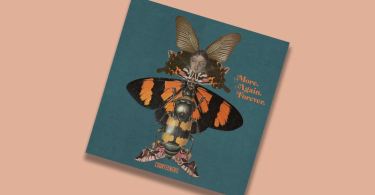Scouring YouTube you’ll find an ever increasing high number of YouTube rappers. All of them probably dream of their videos becoming a viral hit and the success that all brings.
Scouring YouTube you’ll find an ever increasing high number of YouTube rappers. All of them probably dream of their videos becoming a viral hit and the success that all brings. One rapper who is enjoying the benefits of internet fame is George Watsky.
At the 2006 Youth Speaks Grand Slam Poetry Champion, George Watsky truly stepped into the public’s consciousness with his ‘Pale Kid Raps Fast’ video. In this he speed raps over the instrumental for Busta Rhymes “Break Ya Neck.”
After only a day the video had gained 100,000 views and now has totalled over 10 million. This interest allowed him to get national press as well as appearing on comedienne Ellen DeGeneres’ chat show a number of times.
His success has allowed his work to expand and given him the opportunity to release his third studio album, All You Can Do. Following on from the 2009 release of Watsky and 2013’s Cardboard Castles, All You Can Do shares some similarities to his previous works but showcases his further evolution as an artist.
Anecdotal style and worldwide attention
From the opening track All You Can Do our ears are greeted to the sound of strings before the recognisable sound of Watsky’s voice is heard. Utilising his anecdotal style reminiscent of some of his poetry work, we’re told about his struggles; from his wish to be a man of his word and to living up to the mistakes he’s made in the past.
One mistake of Watsky’s that has garnered him worldwide attention was his infamous stage dive at Alexandra Palace. During the last song of his set he jumped into the audience from a 35ft lighting rigging and in the process landed on two people. Watsky suffered numerous bruises whilst a fan was left with a broken arm and another with back injuries.
This incident was the basis of another track on his new album, the song being entitled, ‘Ink Don’t Bleed.’
‘Ink Don’t Bleed’ shows his regret at what happened. In the song we learn more about the girl, about how she was training to become a tattooist and how he could have ended up given her nerve damage. The fact that he could of ruined someone’s dream due to his lack of thinking. He also raps about the reaction that the event had.
For how his fans were unable to grasp what he had done and how they’d wear any injury they received like a badge of honour. Also how the mainstream media started mentioning him more and his feelings towards the old adage of all publicity is good publicity. His reply to this is that anything good is made redundant if he had to hurt someone on the way.
He believes his music is to help others, not to hurt them. The song is interjected by a chorus sung by the brilliant Anderson Paak. His soulful voice provides an excellent foil to Watsky’s heartfelt lyrics.
Anderson Paak makes two more appearances on the album but I believe his stand out appearance is on the track ‘Stand for Something.’ Again the man once known as Breezy Lovejoy’s voice is utilised perfectly. Due to the stylistic differences between the two it sounds more like a sample of a song but the fact it isn’t works perfectly.
For fans of Watsky this song has everything you’ve become accustomed to from his discussions on the idea of celebrity to his use of anecdotal information. In this song the information is used to show how much he puts into the art that he makes and to give his fan a brief window to look into what it has taken for him to become the performer he is now.
Clever metaphor laden lyrics
Another previously mentioned staple of Watsky is his ability to rap fast, showcased on the track ‘Whoa Whoa Whoa.’ I do recommend watching the video to this, it’s shot really well and also stars comedian Bo Burnham and Jim Beluschi. When I first listened to this I found it reminiscent of Eminem’s ‘Rap God,’ which cannot really be a bad thing.
To me ‘Whoa Whoa Whoa’ is the stand out track of the album. It encapsulates everything fans have come to love from Watsky, with his clever metaphor laden lyrics to his wording towards certain topic (one example being what he would like to do to Miley Cyrus) to his ability to kick it up a notch when needed.
As a whole All You Can Do is everything a fan would want from a Watsky album, but that does not make it boring. It shows enough an evolving artist that each song seems new and as a whole seems different. For those that are just learning the ropes with Watsky this album is certainly a great place to start.
What do you think of George Watsky’s new album? Let us know in the comments below!








